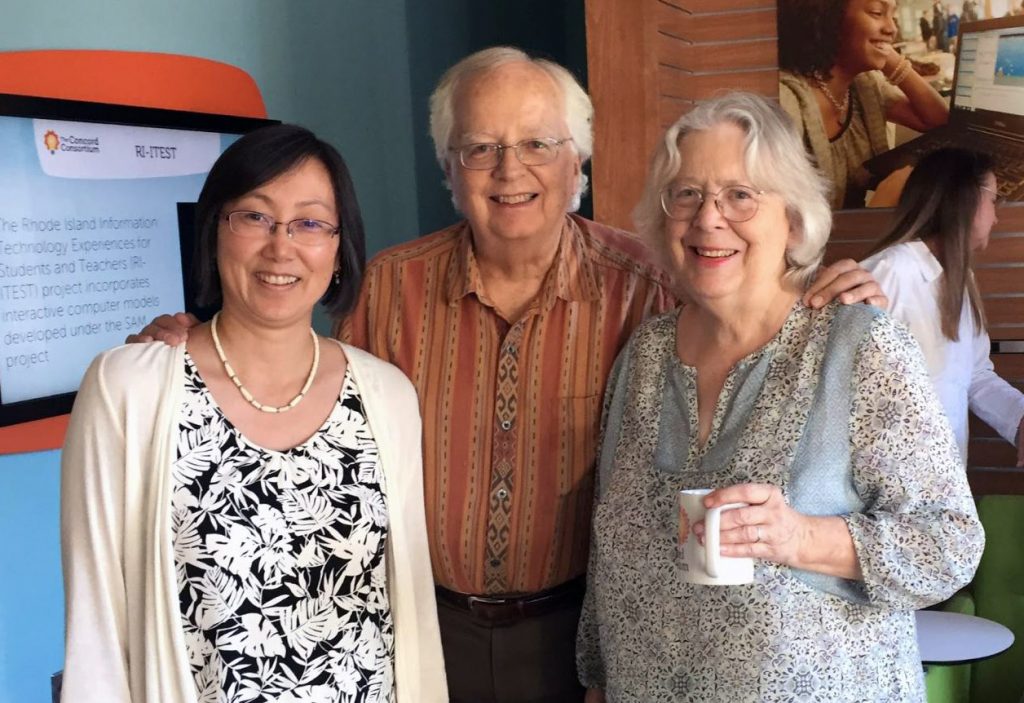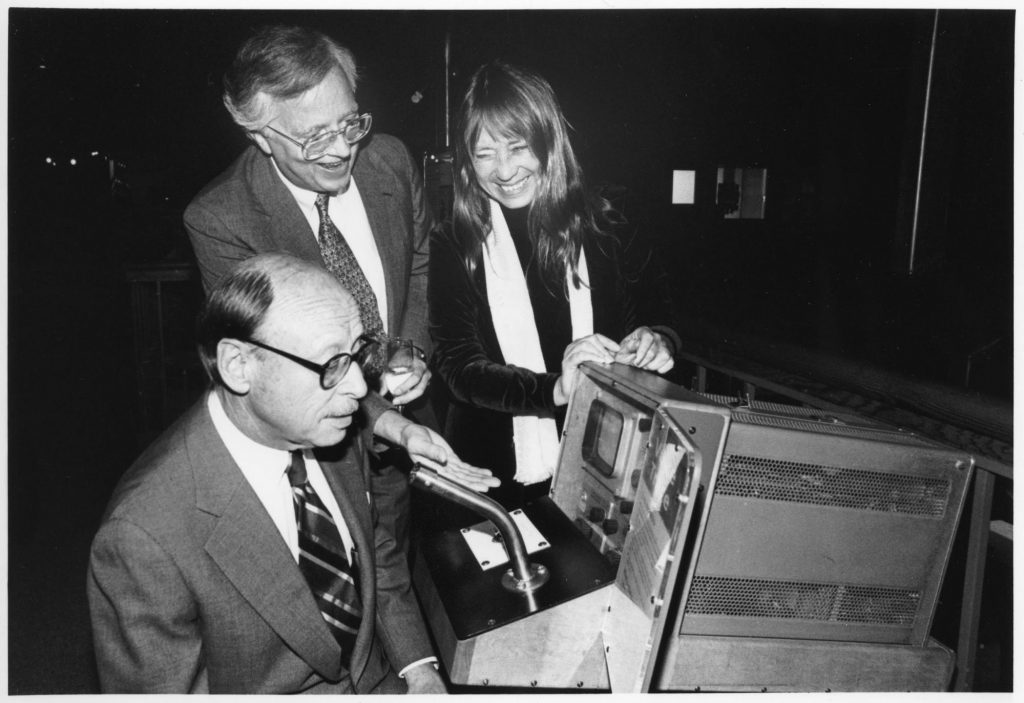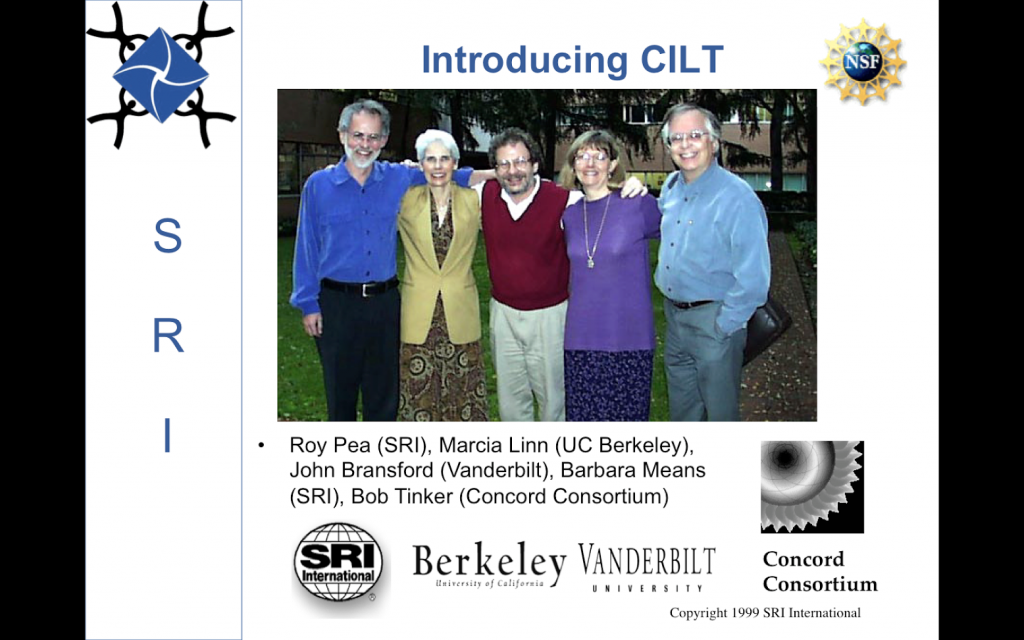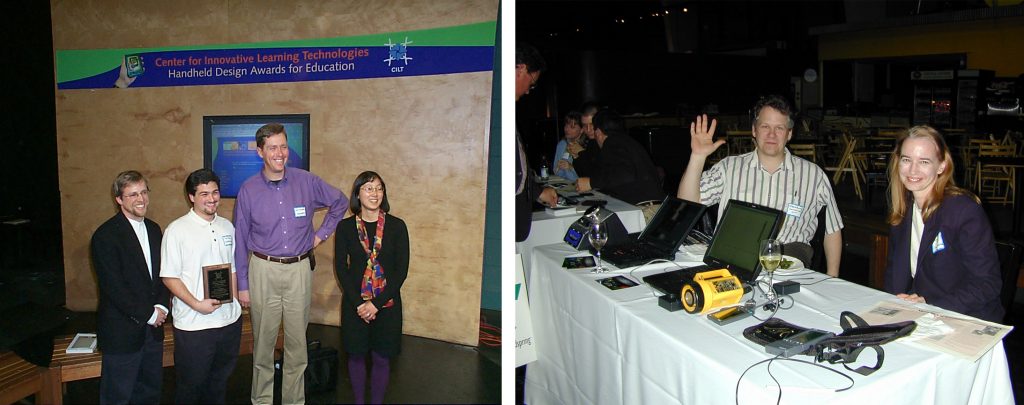Concord Consortium Senior Research Scientist Sherry Hsi remembers our founder Bob Tinker who passed away on June 21st. For more personal stories about Bob and his impact, and to share your own, visit rememberingbob.concord.org

There are few times in the world when you can say you met a person who has changed your life. I’ve had the benefit of many wonderful mentors in my life, but Bob Tinker was the mentor who was my academic non-academia father. In 1996, I was in graduate school at UC Berkeley when I first met Bob. Marcia Linn brought me to SRI International where Roy Pea was convening different stakeholders to share the possible formation of a center for innovative learning technologies. Bob was so enthusiastic and energetic about ideas. Unlike others in the room, Bob wasn’t wearing a suit or tie. He was wearing a vest adorned with buttons, one of which read “Go VHS!” (for Virtual High School). He looked more like an activist. He was fighting for social justice, equal opportunity, and science education.
Bob invited me to visit the Concord Consortium shortly after the nonprofit opened on 37 Thoreau Street in Concord, Massachusetts. This is where I first met Ray Rose, Sarah Haavind, Bruce Droste, Carolyn Staudt, George Collison, and other education technology thought leaders. Netscape Navigator was two years old, yet the team was already implementing a model international online STEM professional development program for teachers and architecting the first virtual high school.
That was just the beginning of a wonderful adventure and mentorship. Bob and I would chat about crazy ideas like putting wireless cameras on birds and nestboxes, using mobile devices for citizen science, or designing smart museum exhibits that would be aware and responsive to visitor interactions. He would share with me drafts of how an idea – always in his signature blue Palatino font – would be iteratively shaped into a winning proposal. He showed how the most daunting and intimidating problems could be made accessible if you were willing to go back to core ideas, build models, and tinker a while without the fear of failure.
During my postdoc with the Concord Consortium and the Center for Innovative Learning Technologies, we explored ways to design and scaffold science inquiry using probes and handhelds in creeks and watersheds. We also sparked and seeded projects to grow the capacity of educational mobile STEM designers by hosting a design competition at the Exploratorium. (The winning app simulated the results of cross-breeding different fish on Palm Pilots.) Bob joined remotely to the live webcast by telephone. I remember how his super amplified voice boomed over the audience like a television voice from God, enthusiastic about the potential that collaborative learning and mobile devices could have on education.
Bob was the reason I left K-12 classroom research to work at the Exploratorium. He spent a few weeks of of the year in 1998 as an Osher Fellow when the museum was led by Goery Delacote, fellow physicist. He contributed to ideas during the formation of the Center for Media and Communication where I subsequently accepted a research position. He and Rob Semper asked what-if questions around the possibility of supporting deeper visitor engagement within the museum and extended science learning beyond. What if the whole museum had ubiquitous wireless access and fast networks for media sharing? Imagine that when 802.11b was new! This led to the Electronic Guidebook Project and a strand of early experiments to test inquiry using handhelds, RFID, cameras, and beacons with exhibits. Today, this pioneering work continues to re-emerge in different forms across many museums.
Bob was more than an academic mentor. He and his wife Barbara invited me into their home, lifted my spirits when life got tough, and pushed me back out into the world. Our most recent collaboration was working together on an NSF-funded project to bring Internet-of-Thing sensors and actuators into laboratories for high school biology to support science and engineering practices together with computational thinking. This brought me back to the Concord Consortium, but this time, in the West Coast office. Unlike when we first met, high-speed multi-site web video conferencing was now possible with a single click. The Maker movement now gave us so many low-cost DIY options to play with. We spent the last year connecting and chatting by Zoom from his workshop in Amherst.
I will miss his chortling, his outbursts about Reagan, his spreadsheet genius, his photography of nature, and his genuine care in all people. I enjoyed chasing ideas and money together, but my favorite memories are seeing him race down Pier 15 with my youngest son Lucas to see fog appear, hearing him hum and wash the dishes while Barbara and I played Schubert after dinner in Carlisle, and sneaking out of a PI meeting for a moment to watch a rainbow form right after a rain shower. He was always willing to share the last piece of toffee or ask for two spoons when he ordered dessert.
Bob – wherever you are, I hope you are flying high. Thanks for helping me grow. You gave me so many gifts and words of encouragement along the way. I feel lucky that our paths crossed in this large chaotic universe. You are one of a kind. I miss you terribly.









